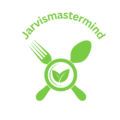In today’s digital age, children’s tablets have become invaluable tools for fostering literacy skills and language development in young learners. With a wide array of interactive reading and language apps available, parents and educators have access to engaging resources that support children’s literacy journey. In this comprehensive guide, we will explore the importance of literacy skills, the benefits of using reading and language apps on children’s tablets, and highlight some of the best apps available to boost literacy skills in children.

- The Importance of Literacy Skills: Literacy skills form the foundation of academic success and lifelong learning. Strong literacy skills enable children to read, write, communicate effectively, and comprehend complex texts across various subjects. Early literacy skills are particularly critical for young children as they prepare for school readiness and future academic achievement. By fostering literacy skills from an early age, children develop the foundational skills necessary to navigate the world around them and become lifelong readers and learners.
- Benefits of Reading and Language Apps: Reading and language apps on children’s tablets offer a host of benefits that complement traditional literacy instruction and promote interactive learning experiences. Some of the key benefits include:
- Engagement and Motivation: Interactive features, colorful graphics, and engaging narratives capture children’s attention and motivate them to actively participate in reading activities.
- Personalized Learning: Reading and language apps adapt to each child’s individual learning pace, interests, and abilities, providing personalized feedback and scaffolding to support their literacy development.
- Accessibility and Convenience: Children can access reading and language apps anytime, anywhere, making learning opportunities more accessible and convenient for families, whether at home, on-the-go, or during travel.
- Multimodal Learning: Reading and language apps incorporate various multimedia elements, such as audio narration, interactive animations, and touch-screen interactions, to accommodate different learning styles and promote multimodal learning experiences.
- Progress Tracking and Assessment: Many reading and language apps offer progress tracking tools and performance assessments that allow parents and educators to monitor children’s literacy skills development, identify areas of growth, and provide targeted support.
See price for Contixo 10″ Android Kids Tablet 64GB Bundle, Includes 80+ Disney Storybooks & Stickers (Value $350), Kid-Proof Case with Kickstand & Stylus, Headphone, Sleeve Bag (2023 Model) (Blue) https://amzn.to/3TxWfm8
- Top Reading Apps for Children’s Tablets:
- Epic!: Epic! is a digital library app that offers unlimited access to thousands of high-quality children’s books, audiobooks, and educational videos. With a vast selection of titles across multiple genres and reading levels, Epic! encourages children to explore diverse topics and discover new interests while improving their reading comprehension and vocabulary skills.
- Reading Eggs: Reading Eggs is an interactive reading program that uses games, activities, and leveled lessons to teach phonics, sight words, and reading fluency. Through engaging characters and rewards-based gameplay, Reading Eggs motivates children to practice essential literacy skills and build confidence as readers.
- Starfall: Starfall is a comprehensive literacy platform featuring interactive games, songs, and stories designed to teach phonics, reading comprehension, and language arts concepts. With its systematic approach to literacy instruction, Starfall helps children develop essential reading skills in a fun and engaging way.
- ABCmouse: ABCmouse offers a wide range of interactive activities, games, and puzzles that cover reading, math, science, and art concepts. Through its adaptive learning pathway and immersive learning environment, ABCmouse supports children’s literacy development while fostering critical thinking and problem-solving skills.
- Language Apps for Children’s Tablets:
- Duolingo: Duolingo is a popular language learning app that offers interactive lessons and activities for children to learn languages such as Spanish, French, German, and more. With its game-like format and bite-sized lessons, Duolingo makes language learning fun and accessible for children of all ages.
- Endless Alphabet: Endless Alphabet is an educational app that introduces children to letters, phonics, and vocabulary through playful animations and interactive puzzles. Children learn letter sounds, word meanings, and spelling patterns while exploring whimsical characters and scenarios.
- Lingo Kids: Lingo Kids offers a collection of language learning games, songs, and videos designed to teach English to young learners. With its colorful graphics, catchy tunes, and interactive activities, Lingo Kids engages children in language acquisition while promoting listening, speaking, and comprehension skills.
- Babbel Kids: Babbel Kids is an immersive language learning app that exposes children to real-life language situations, cultural insights, and practical vocabulary. Through storytelling, games, and conversations, Babbel Kids helps children develop conversational skills and cultural awareness in foreign languages.
See price for Kids Tablet Bundle: Includes Amazon Fire HD 10 Kids tablet, 10.1″, | 32 GB | Sky Blue & Made for Amazon, Kids Bluetooth Headset Ages (3-7) | Purple https://amzn.to/3TNWxqi
- Tips for Maximizing Learning with Reading and Language Apps: To maximize the effectiveness of reading and language apps for children’s tablets, consider the following tips:
- Set aside dedicated time for daily reading and language practice to establish consistent routines and reinforce learning habits.
- Encourage active engagement by asking questions, discussing story themes, and relating reading experiences to real-life contexts.
- Monitor children’s progress and provide positive reinforcement and encouragement to celebrate achievements and milestones.
- Incorporate offline activities, such as storytelling, role-playing, and word games, to reinforce learning and extend the learning experience beyond the digital screen.
- Rotate and explore different reading and language apps to keep children engaged and motivated, and to expose them to a variety of learning experiences and content.
Reading and language apps on children’s tablets offer powerful tools for boosting literacy skills and language development in young learners. By harnessing the interactive features, engaging narratives, and personalized learning experiences provided by these apps, parents and educators can create enriching educational environments that inspire children to become confident readers, effective communicators, and lifelong learners. Whether it’s exploring interactive stories, practicing phonics, or learning a new language, children’s tablets play a pivotal role in shaping the literacy journey of children around the world.

